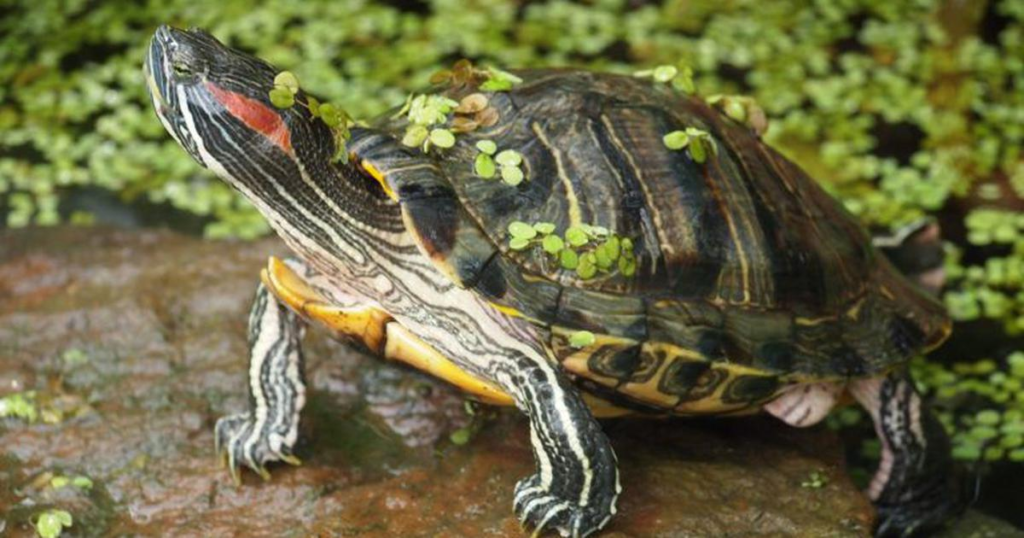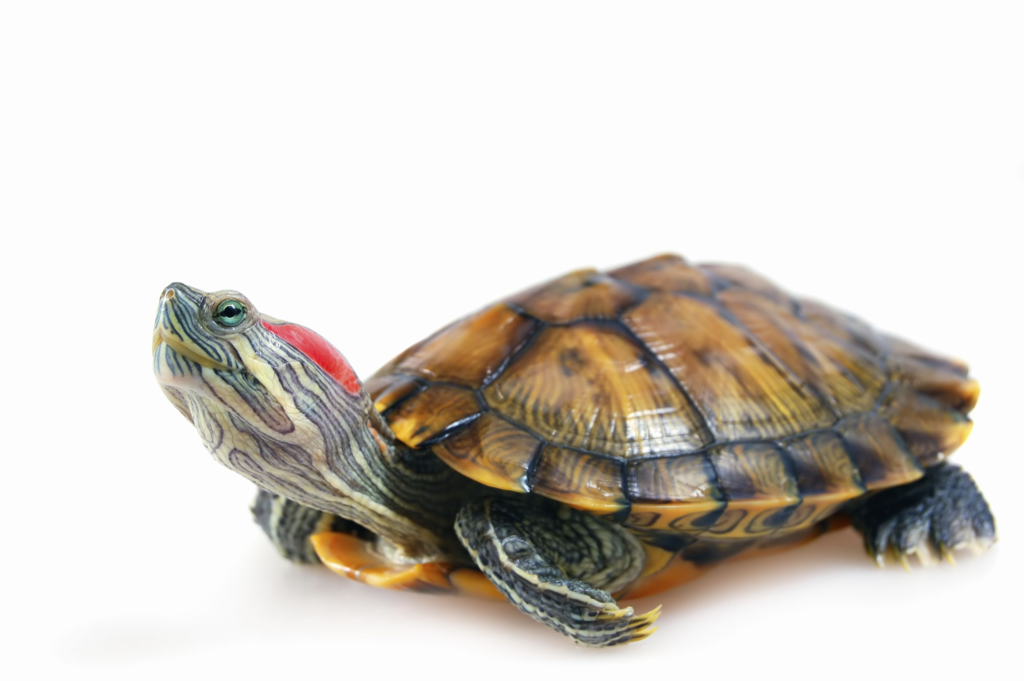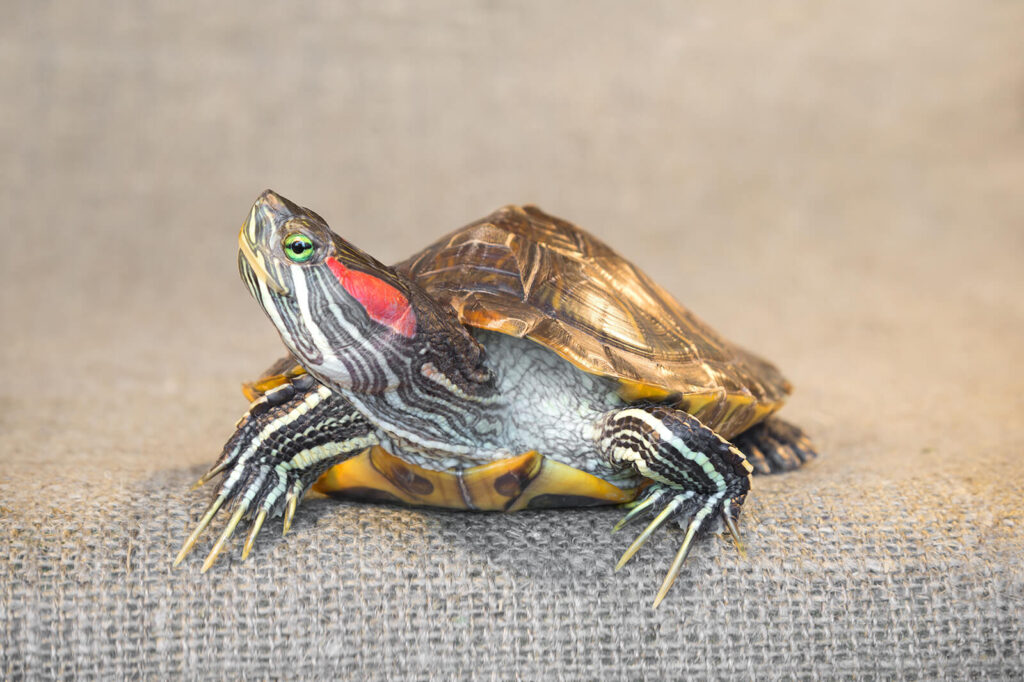Table of Contents
ToggleIntroduction
Red-eared slider turtles (Trachemys scripta elegans), native to the southeastern United States, have smoothly transitioned from their natural environments to become treasured members of countless households worldwide. Water Temperature For Red Slider Turtles? Fans of all ages enjoy these turtles, recognized for their vivid red stripes behind each eye and a penchant for sunbathing. They spend their time as semi-aquatic creatures alternating between the relaxing embrace of water and the sun drenched warmth of basking areas, emphasizing the need for proper water temperature in their overall care.
The watery canvas that red-eared sliders inhabit is a delicate tapestry that requires meticulous attention, with water temperature emerging as a significant brushstroke. Ectothermic red-eared sliders rely on external heat sources to control their body temperature.
Ideal Water Temperature Range
Optimal Temperature for Red Slider Turtles: The Red-eared Slider Turtle (Trachemys scripta elegans) is a popular aquatic pet known for its vibrant red markings and friendly demeanor. Maintaining an optimal water temperature is crucial to ensuring the well-being and longevity of these fascinating reptiles. Red Sliders thrive in a water temperature range of 75 to 85 degrees Fahrenheit (24 to 29 degrees Celsius). They exhibit optimal metabolic rates within this range, facilitating proper digestion, immune system function, and overall vitality.
Importance of Consistent Temperature Control: Consistent temperature control is paramount in caring for Red-eared Slider Turtles. These ectothermic creatures rely on their environment to regulate their body temperature. Fluctuations outside the optimal range can adversely affect their health and well-being. Red Sliders are particularly sensitive to sudden changes in temperature, which can lead to stress. Appetite loss, and susceptibility to diseases.
Factors Influencing Water Temperature

Ambient Room Temperature: The ambient room temperature influences the water temperature within a Red-eared Slider Turtle’s enclosure. The surrounding air temperature directly affects the water temperature, as aquariums absorb heat from their environment. Pet owners need to consider the room temperature and, if necessary. Make adjustments to maintain a consistent and suitable environment for their turtles. In cooler climates or during winter, additional measures such as insulating the tank or using room heaters may be required to prevent the water temperature from dropping below the recommended range.
Use of Aquarium Heaters: Aquarium heaters are indispensable tools for maintaining a stable and controlled water temperature within the optimal range for Red-eared Slider Turtles. These devices have thermostats that allow pet owners to set and regulate the desired temperature. It is advisable to choose a heater appropriate for the size of the turtle’s enclosure and to place it in a way that ensures even heat distribution. Regular monitoring of the water temperature with a reliable thermometer helps prevent sudden fluctuations and ensures the well-being of the turtles.
Adequate Basking Areas: Basking areas are critical components of a Red Slider Turtle’s habitat, influencing their body temperature and overall well-being. Providing a designated basking spot with a heat source, such as a basking lamp or heating pad. Allows the turtles to raise their body temperature by exposing themselves to external heat. This behavior is essential for their thermoregulation, digestion, and immune system function. Combining an adequately heated basking area and a well-regulated water temperature creates an environment that promotes. The turtles’ natural behaviors and contributes to their overall health.
Monitoring And Adjusting Water Temperature
Regular Use of a Reliable Aquarium Thermometer: Maintaining a stable water temperature is a key aspect of caring for Red-eared Slider Turtles, and regular monitoring is crucial to ensuring their well-being. A reliable aquarium thermometer is essential for pet owners to gauge the water temperature accurately. By placing the thermometer in a strategic location within the enclosure. Such as away from direct heat sources and near the basking area. Owners can accurately represent the overall water temperature.
Adjusting Temperature Settings on Heaters: Aquarium heaters equipped with adjustable temperature settings provide pet owners with the flexibility to cater to the specific needs of Red-eared Slider Turtles. When using a heater, setting the thermostat to maintain the desired water temperature range is essential. Should the ambient room temperature fluctuate or seasonal changes occur, adjusting the temperature settings on the heater becomes necessary. Regular observation of the thermometer readings and proactive adjustments to the heater settings help prevent sudden temperature shifts. Providing a stable and comfortable environment for the turtles.
Maintaining a Suitable Temperature Gradient: Creating a temperature gradient within the aquarium is vital for accommodating the diverse thermoregulatory needs of Red Slider Turtles. It involves establishing different temperature zones. Including a basking area with higher temperatures and a cooler area within the optimal range. This gradient allows turtles to move between warmer and cooler areas as needed, supporting their natural behaviors.
Potential Issues And Solutions

Health Problems Associated with Incorrect Temperatures: Maintaining the correct water temperature is paramount for the health of Red-eared Slider Turtles. Incorrect temperatures can lead to various health issues, such as respiratory infections, weakened immune systems, and digestive problems. Prolonged exposure to temperatures outside the recommended range may also result in lethargy. Decreased appetite, and, in severe cases, life-threatening conditions. Pet owners must recognize the significance of temperature control to prevent these potential health problems and provide a conducive environment for their turtles.
Signs of Stress or Discomfort in Red Sliders: Red Slider Turtles exhibit distinct behaviors and physical signs when experiencing stress or discomfort due to temperature-related issues. Common indicators include decreased activity, refusal to eat, abnormal basking behavior, and changes in shell or skin condition. If owners observe these signs, it’s crucial to investigate and promptly address the potential temperature-related factors causing stress. Recognizing these signals early on allows swift intervention, preventing further deterioration of the turtle’s health.
Remedial Actions for Temperature-Related Issues: Addressing temperature-related issues requires a systematic approach to restore the well-being of Red-eared Slider Turtles. If the water temperature is too low. Adjusting the aquarium heater settings to raise the temperature within the optimal range is necessary. In contrast, if temperatures are too high, steps should be taken to cool the water. Such as reducing the heater settings or adjusting the ambient room temperature.
Conclusion
The elaborate thermoregulation dance orchestrated by red-eared sliders revealed itself as a critical part of their well-being. Recognizing the many demands of these turtles—warmth for digestion, basking zones for rejuvenation, and cooler retreats for balance—is essential to understanding this ballet. Balancing these temperature gradients throughout the aquatic ecosystem meets physiological requirements and fosters behavioral fulfillment.
Our duty as caregivers extends beyond simply providing a habitat; it also includes creating an environment where the water temperature is in sync with the demands of red-eared sliders. The complexities of monitoring water temperature variations, supplying heat sources, and providing different thermoregulatory landscapes became essential components of this investigation.







